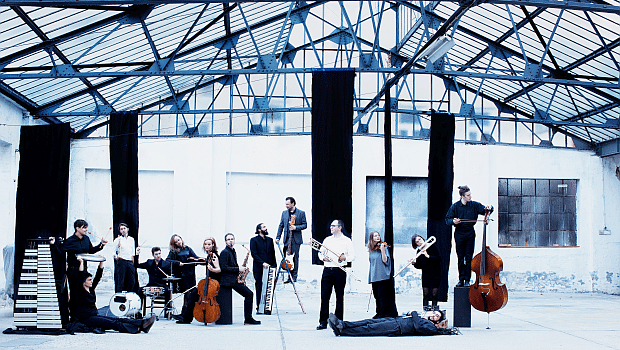
Pushing boundaries: towards new horizons
Composers require performers to make their art heard. As trivial as this observation might seem at first, there were not always lots of performers available. In the initial decades following World War II, composers were confronted with a lack of ensembles, something which many composers turned into a virtue by proceeding to establish their own ensemble. This was the case for Friedrich Cerha and die reihe (1958), for HK Gruber, Kurt Schwertsik, Otto M. Zykan and the MOB art & ton art Ensemble (1968), and for Klaus Ager and the oesterreichisches ensemble für neue musik (1975) – just to name a few.
If we look at the calendar of events today, there is a broad range of musical offerings which are all performed not only at exquisite levels, but which also cover all facets of artistic trends in new music and, with that, associated art and musical forms like composition and improvisation, old and new music, and numerous other genres right up to influences from jazz, pop, and electronics. Moreover, pure acoustic ensembles get just as much attention as ensembles drawing on various technologies. In these diverse environments, the ensembles succeed at leaving their own respective artistic mark. This is due to the fact that numerous ensembles actively contribute to the emergence of new pieces by commissioning compositions, the unbelievable abilities of their members quite often being referred to as inspiration by the composers.
At this point we would also like to highlight the vast range of activities offered for professional musicians and for those expanding to countries abroad. One canfind these under “Service & Information”. At the back of the brochure “Contemporary Music from Austria” one can also find important addresses for other ensembles.
While the existence of these numerous ensembles should put to bed any justification for these pieces not being performed, a dire lack of opportunities for contemporary compositions to be heard persists. Undisputed for instance, is that despite an outstanding level of artistry and a to some extent hard-to-surpass international reputation, such ensembles can often only be maintained and developed with tremendous personal effort and idealism.
For this reason, we would like to do our part – however small – in contributing to the visibility of the diverse and innovative ensembles in Austria and beyond, and, above all, to increasing their audibility.
Doris Weberberger – translated by KORRELEKTOR
This article was first published as preface of the booklet “Contemporary Music from Austria“/ Download PDF

